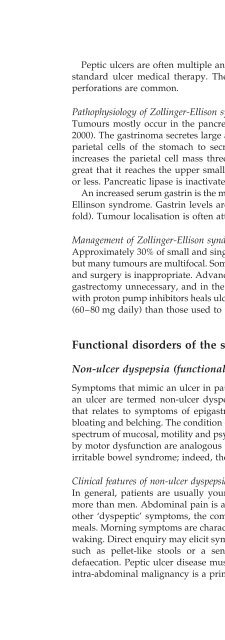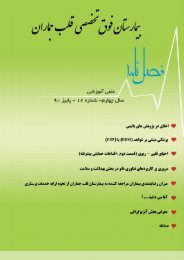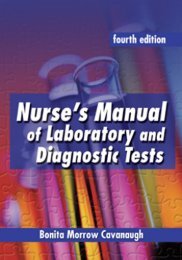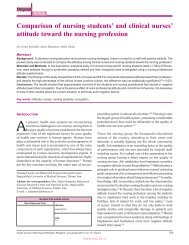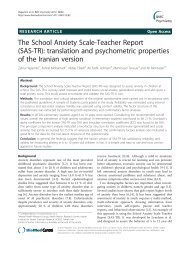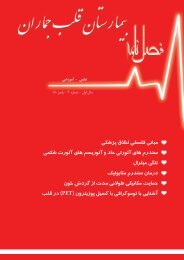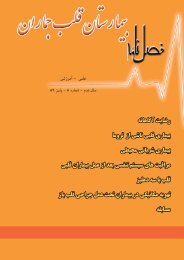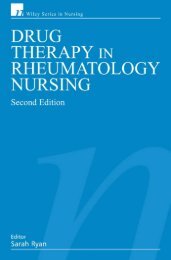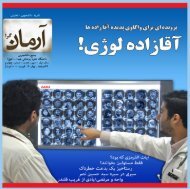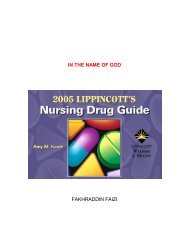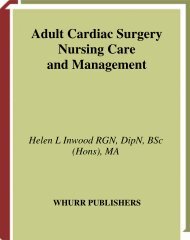Gastrointestinal Nursing.pdf
Gastrointestinal Nursing.pdf
Gastrointestinal Nursing.pdf
Create successful ePaper yourself
Turn your PDF publications into a flip-book with our unique Google optimized e-Paper software.
The Stomach 51Peptic ulcers are often multiple and severe and there is a poor response tostandard ulcer medical therapy. The history is usually short; bleeding andperforations are common.Pathophysiology of Zollinger-Ellison syndromeTumours mostly occur in the pancreatic head or tail (Misiewicz and Punder2000). The gastrinoma secretes large amounts of gastrin, which stimulates theparietal cells of the stomach to secrete acid to their maximal capacity andincreases the parietal cell mass three to sixfold. The acid output may be sogreat that it reaches the upper small intestine, reducing the luminal pH to 2or less. Pancreatic lipase is inactivated and bile acids are precipitated.An increased serum gastrin is the most specific and reliable test for Zollinger-Ellinson syndrome. Gastrin levels are grossly elevated (ten to one thousandfold).Tumour localisation is often attempted using a CT scan.Management of Zollinger-Ellison syndromeApproximately 30% of small and single tumours can be localised and resectedbut many tumours are multifocal. Some patients present with metastatic diseaseand surgery is inappropriate. Advances in medical treatment have made totalgastrectomy unnecessary, and in the majority of patients continuous therapywith proton pump inhibitors heals ulcers and alleviates diarrhoea. Larger doses(60–80 mg daily) than those used to treat duodenal ulcer are required.Functional disorders of the stomachNon-ulcer dyspepsia (functional dyspepsia)Symptoms that mimic an ulcer in patients who have no objective evidence ofan ulcer are termed non-ulcer dyspepsia. Dyspepsia is a rather vague termthat relates to symptoms of epigastric discomfort, burning or pain, nausea,bloating and belching. The condition of non-ulcer dyspepsia probably covers aspectrum of mucosal, motility and psychiatric disorders. The symptoms causedby motor dysfunction are analogous to the motility disturbances that occur inirritable bowel syndrome; indeed, these disorders commonly occur together.Clinical features of non-ulcer dyspepsiaIn general, patients are usually young (< 40 years) and women are affectedmore than men. Abdominal pain is associated with a variable combination ofother ‘dyspeptic’ symptoms, the commonest being nausea and bloating aftermeals. Morning symptoms are characteristic and pain or nausea may occur onwaking. Direct enquiry may elicit symptoms suggestive of colonic dysmotility,such as pellet-like stools or a sense of incomplete rectal evacuation ondefaecation. Peptic ulcer disease must be considered, whilst in older subjectsintra-abdominal malignancy is a prime concern.


